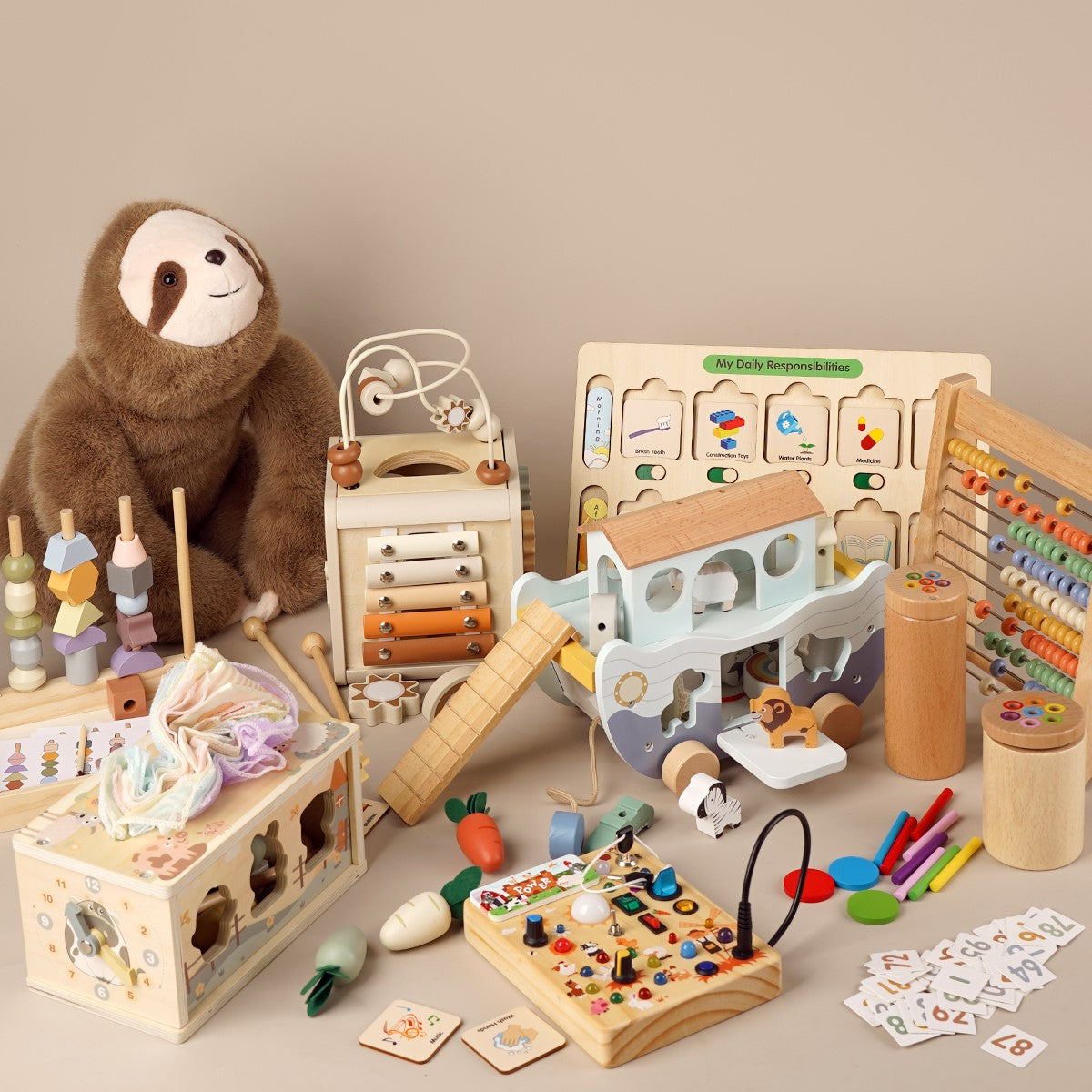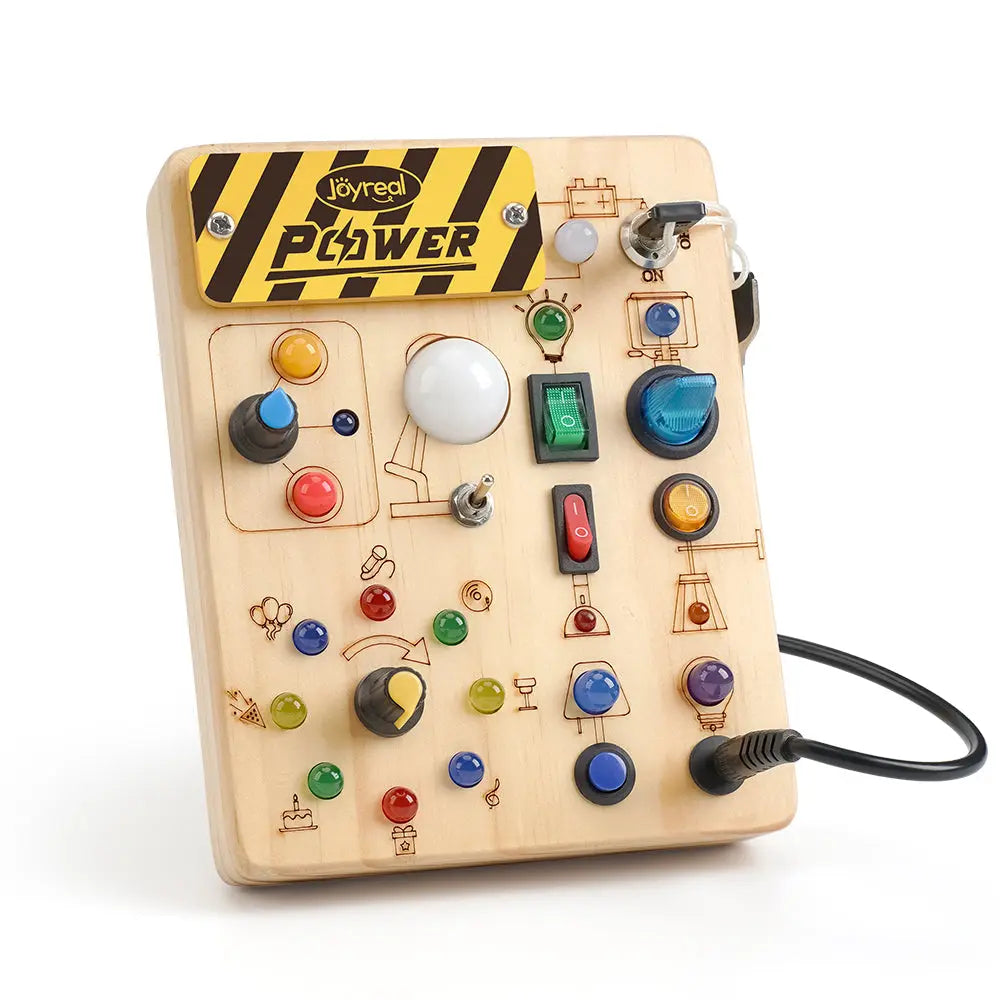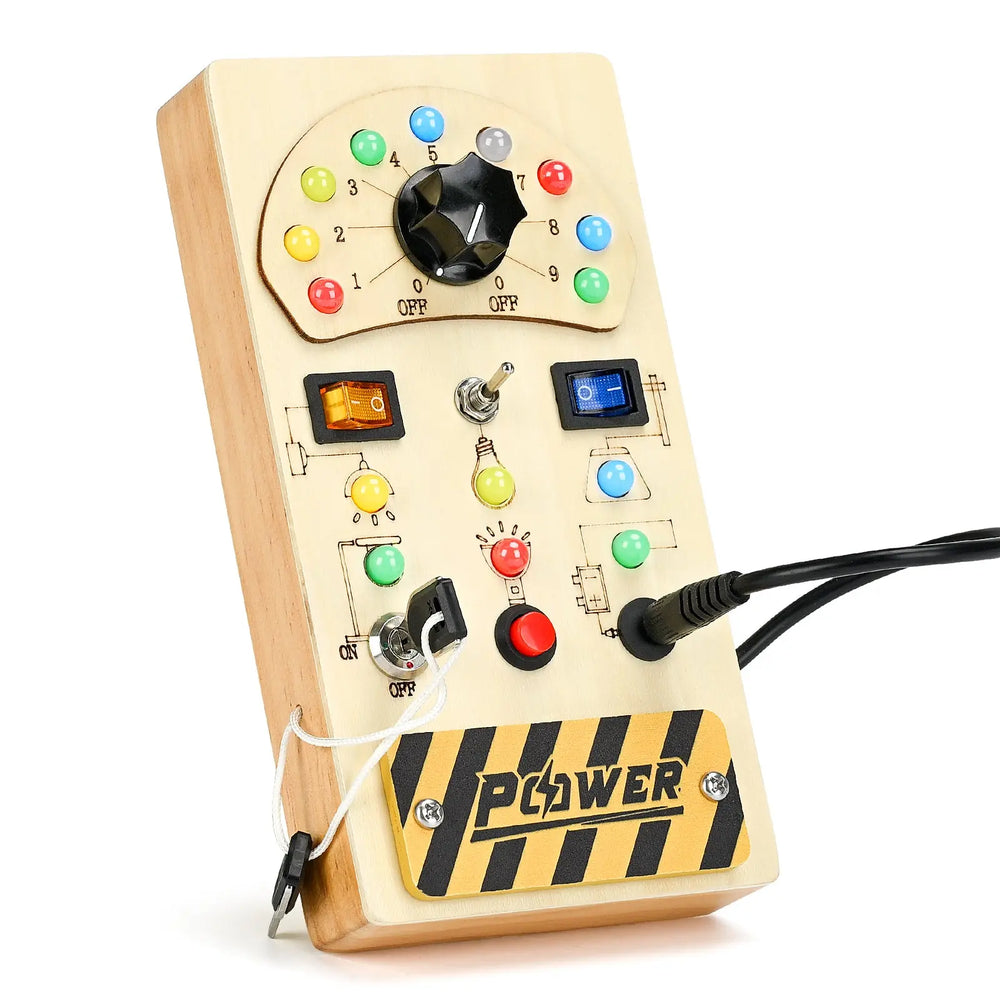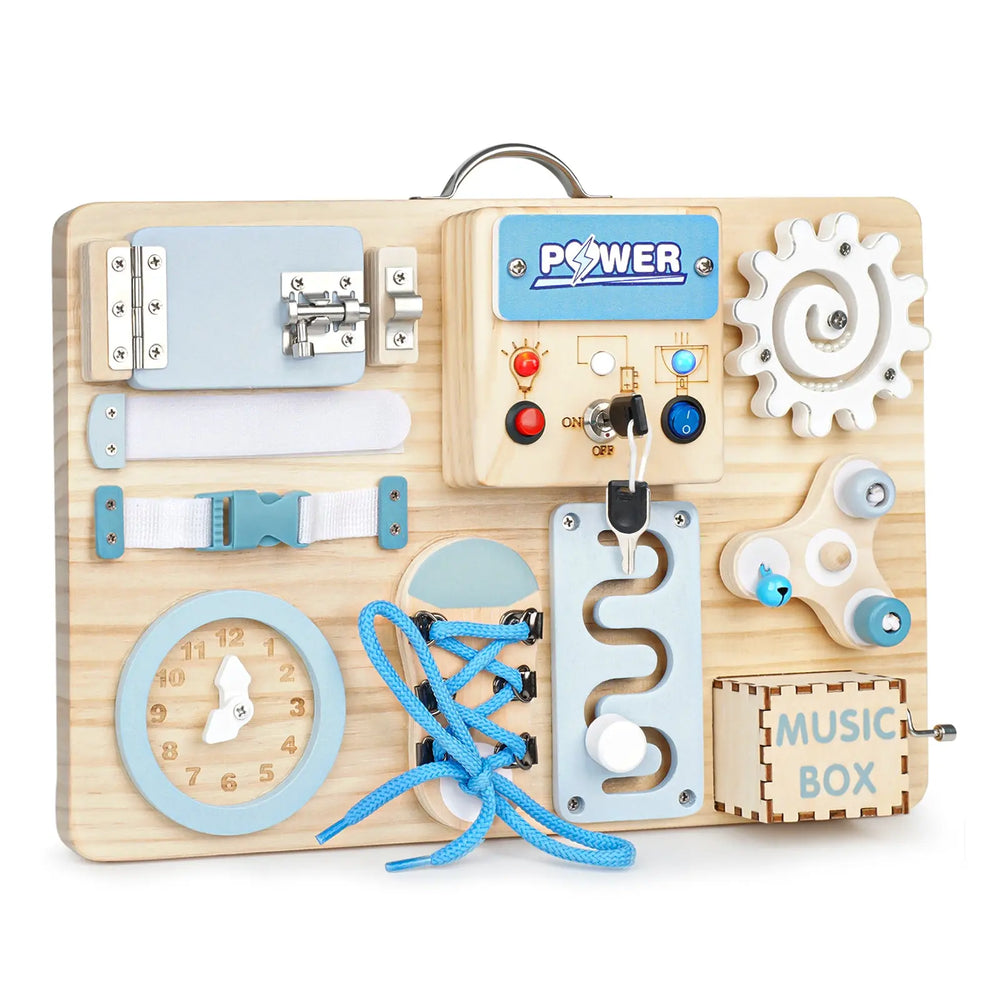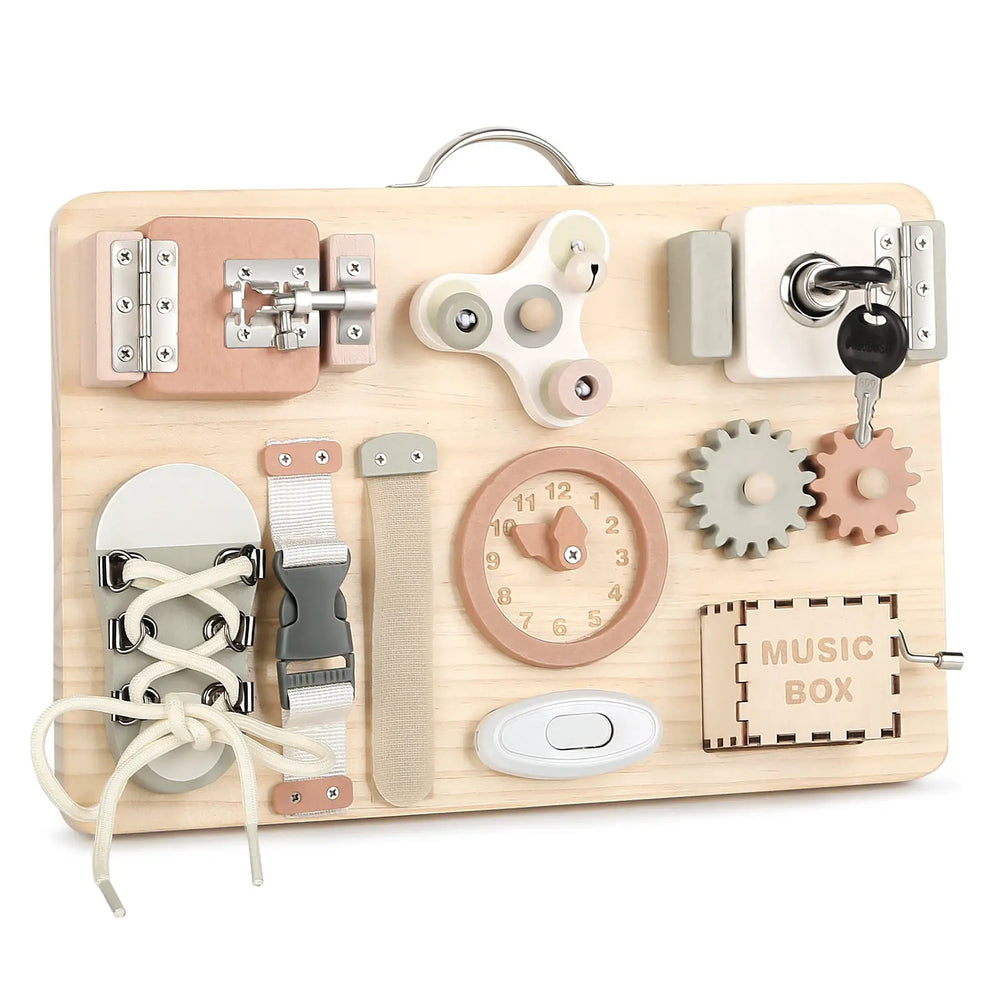How Can i Choose Montessori Toys?
What are Montessori Educational Toys?
Montessori educational toys are more than just playthings; they are tools designed to support your child's natural development and foster a love for learning. Rooted in the Montessori education philosophy, these toys encourage children to explore, experiment, and learn at their own pace. The goal is to create a stimulating environment where children can develop cognitive, motor, social, and emotional skills through hands-on experiences.
Key Characteristics of Montessori Toys
1. Simplicity: Montessori toys are intentionally simple in design, free from unnecessary complexity or excessive features. This helps your child focus their attention and develop a deeper connection with the materials. Less distraction means more concentration on the task at hand.
2. Natural Materials: You'll often find that Montessori toys are made from natural materials like wood, metal, cotton, and even glass. These materials offer a rich sensory experience, connecting your child to the natural world through touch, sight, and even smell. They are also more durable and eco-friendly than many plastic alternatives.
3. Open-Ended Play: Unlike traditional toys with predetermined uses, montessori toys are designed to be open-ended, allowing your child to engage with them in various ways. This fosters creativity, imagination, and problem-solving skills as they explore different possibilities and make their own choices. A simple set of wooden blocks can become a tower, a bridge, or anything your child imagines!
4. Focus on One Skill: These toys are often designed to help your child focus on mastering one skill at a time. By minimizing distractions, they encourage deeper learning and understanding.
5. Real-Life Connection: Many Montessori toys are based on real-life objects and experiences. This helps children understand the world around them and make sense of their own experiences. For example, toy kitchen utensils allow them to mimic cooking activities they see at home.
6. Independence: Montessori toys empower children to learn and explore independently. They are designed to be accessible and encourage self-directed learning, fostering confidence and self-reliance.
7. Sensory Stimulation: These toys engage multiple senses through various textures, temperatures, and weights. This sensory-rich exploration enhances your child's understanding of the world and supports cognitive growth.
What Is Not Allowed in Montessori Education?
Core Prohibitions in Authentic Montessori
1. External Rewards/Punishments
Rationale: Conflicts with intrinsic motivation development
Forbidden Items:
- Sticker charts
- Gold stars
- Behavior-based praise like "Good job!"
Alternative: Natural consequences and observational feedback ("I notice you stacked all the blocks carefully")
2. Non-Purposeful Materials
Material Restrictions:
- Electronic toys with lights sounds
- Plastic figurines without functional use
- Worksheets for repetitive practice
Reason: Violates the "control of error" principle where materials should self-correct
3. Adult-Directed Interruptions
Practice Limits:
- 📛 Completing tasks for children
- 🕒 Forcing work cycle endings
- 🎯 Insisting on "correct" material use
Exception: Immediate safety interventions
4. Age-Inappropriate Academics
Discouraged Practices:
- Formal writing instruction before 4
- Abstract math before concrete understanding
- Computer-based learning under 6
Operational Bans in AMI-Certified Programs
1. Plastic Materials
Required natural material composition:
- Wood
- Glas
- Metal
- Ceramic
2. Imaginary Play Restrictions
Allowed: Reality-based role play (cooking, cleaning)
Restricted: Fantasy scenarios (dragon slaying, fairy tales)
3. Standardized Testing
Assessment occurs through:
- 📸 Photo journals
- 📝 Anecdotal records
- 🔍 Work sample analysis
4. Grade-Level Grouping
Strict 3-year age ranges required (ex: 3-6, 6-9)
What to Consider When Choosing Montessori Toys
- Avoid Overstimulation: Where possible, choose toys without flashing lights, loud sounds, or excessive electronic features. The goal is to create a calming and focused environment.
- Durability and Sustainability: Look for toys made from sustainable materials that are built to last. This is not only environmentally conscious but also ensures that the toys can be passed down through generations.
- Age Appropriateness: Ensure that the toys are appropriate for your child's age and developmental stage. They should present a challenge that encourages learning without being overly frustrating.
- Toy Rotation: Consider implementing a toy rotation system, where you arrange a limited number of toys (8-10) and swap them out every few weeks. This keeps things fresh and exciting, encouraging independent play and reducing toy boredom.
Introducing Montessori Toys to Your Child
- Slow and Minimal: When introducing a new toy, use slow, deliberate movements and say as little as possible. This helps your child focus on the toy itself and how it works.
- Give Them Space: Resist the urge to jump in and help immediately. Instead, give your child space to explore and problem-solve on their own.
- Embrace Repetition: Encourage repetition, as repeated efforts help your child create strong connections in their brain.
- Focus on Possibilities: Remember that the intended purpose of a toy is just the beginning. Be open to your child finding new and creative ways to play.
By understanding these principles, you can thoughtfully select Montessori-inspired toys that will support your child's development and foster a lifelong love of learning. Remember, it's not about having a playroom full of expensive toys; it's about choosing a few carefully selected items that spark curiosity and encourage exploration.
Maybe it will be helpful for you:
Recent Post

Top Joyreal AAC Devices 2025: Costs, Autism Communication Tips & Smart Buying Guide
Modern AAC Devices for Autism Choosing the right autism communicati...

Why the Joyreal Drum Set Is the Best First Music Toy
Choosing a toddler’s first music toy is a surprisingly big decision...

Top Sensory and AAC Communication Board Gifts for Little Communicators
Why AAC Communication Solutions Matter AAC (Augmentative and Alter...

Why Wooden Toys Make Better Christmas Gifts?
Every year, parents face the same holiday dilemma: Should we buy th...

What Finally Helped My Toddler Speak Up?
If you’re a toddler mom, you already know how much emotional weight...

Joyreal Christmas Toys Deals 2025
Enjoy instant savings across nearly every category, from early lear...

How Wooden Montessori Toys Support a Sustainable Childhood
Most parents don’t say it out loud, but many feel the same quiet fr...

Top Christmas Gifts to Help Kids Communicate Better This Holiday Season
The holiday season brings joy, family bonding, and endless opportun...

How to Make DIY Printable Communication Boards
Communication is at the heart of every child’s development — and fo...

Top 5 Christmas Gifts That Bring Families Closer (2025 Guide)
Christmas isn’t just about the gifts — it’s about the moments we c...
